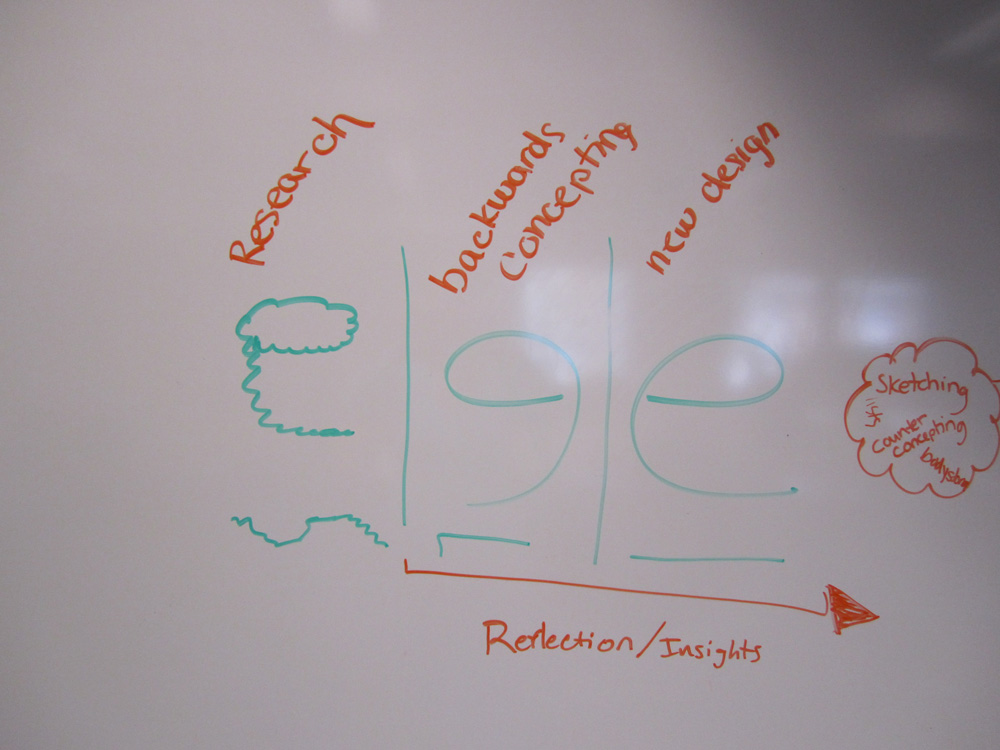Design Process Model - The Contrarian Model, Design Project
A design project looking at creating a Design Process Model that could be used by an advanced team of interaction designers.
Methods Used
Concept Development
Ideation
Sketching
Usability Testing

Design Process Model
In this assignment our group was tasked to create a Design Process Model (DPM) that could be used by an advanced team of interaction designers. We had the freedom to create a DPM for any aspect of the design process. Our team created a model that allows interaction designers to participate in a brainstorming activity with concepts in direct opposition to user research in order to better understand the needs of the users and lead to more creative, user centered concepts.
Process
Initially our team concentrated on communication breakdowns that occur at the beginning of a design project. However, we switched our focus to developing a method to improve the design process, particularly at the brainstorming/concepting stage. We considered using Genevieve Bell's notion of defamiliarization and contrary approaches as either a research or brainstorming method. We eventually narrowed our model down to a braintsorming method in interaction design teams. This method allows teams to think outside the box, think deeper about the problem space, provides a different perspective, and purposely pushes the design boundaries. It encourages designers to go beyond their normal assumptions (acting on defamiliarization) and avoids being a victim of tunnel vision.





Final Concept
There are five major stages that make up The Contrarian Model. In the first stage, the team of interaction designers will come together to look over and ideally mark on a whiteboard all of the research, insights, and findings that they have already obtained. Using these insights and research, the team will begin the second stage by brainstorming and listing out "contrary insights" that oppose their original insights. For example, if one insight found from their research is to make an object soft than the "contrary insight" would be to make the object hard. In the third stage of the model, team members will rapidly sketch concepts based off of the "contrary insights" list made in the previous phase. The third stage can be done as a group where team members reflect in action or done individually where in the fourth stage team members will discuss their newly generated concepts, reflecting on action. In this fourth stage the team will be able to share their new concepts and generate new insights based on their sketches and "contrary insights" in order to develop a new set of concepts and ideas that may not have been developed solely on their original research and insights.